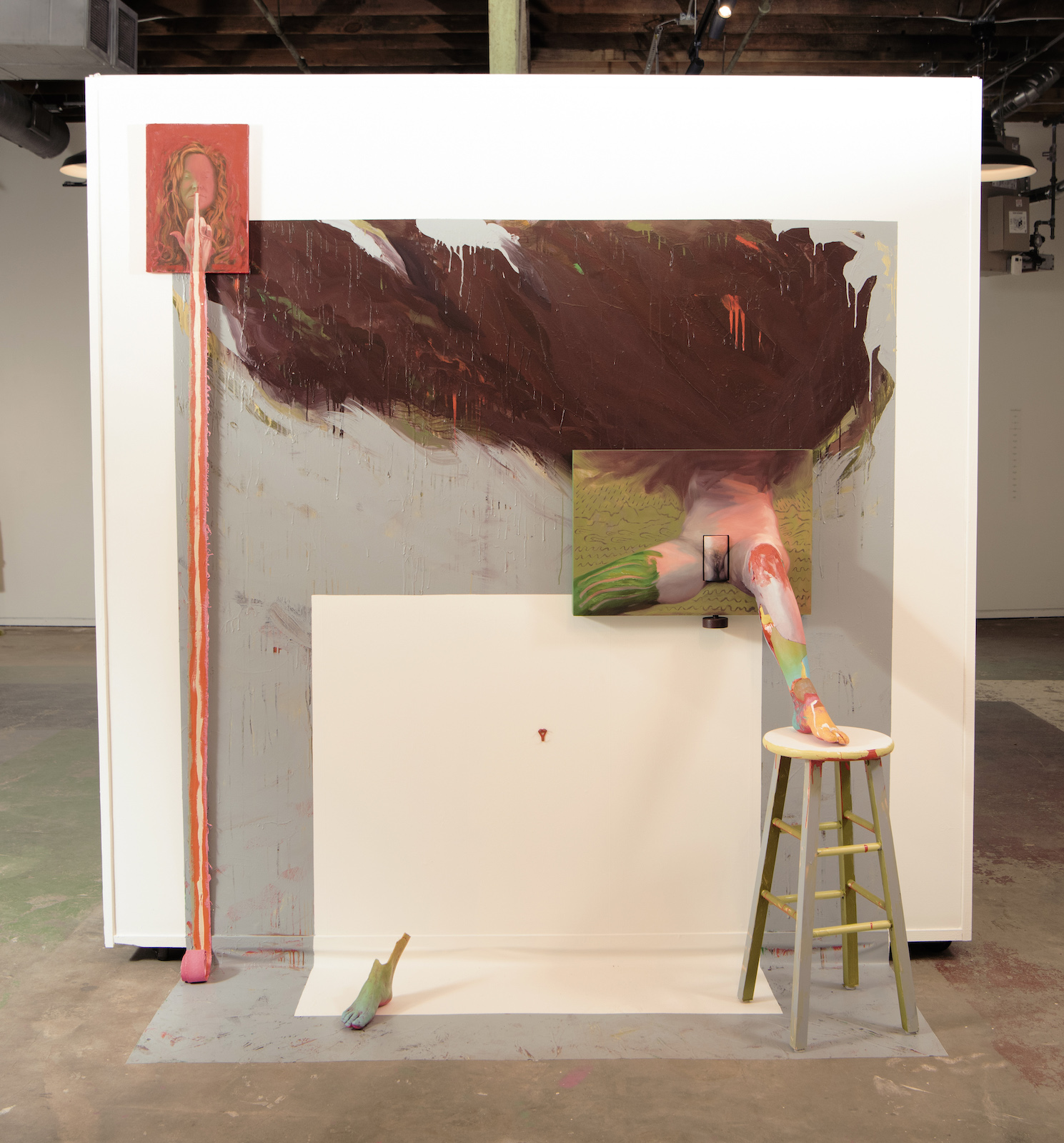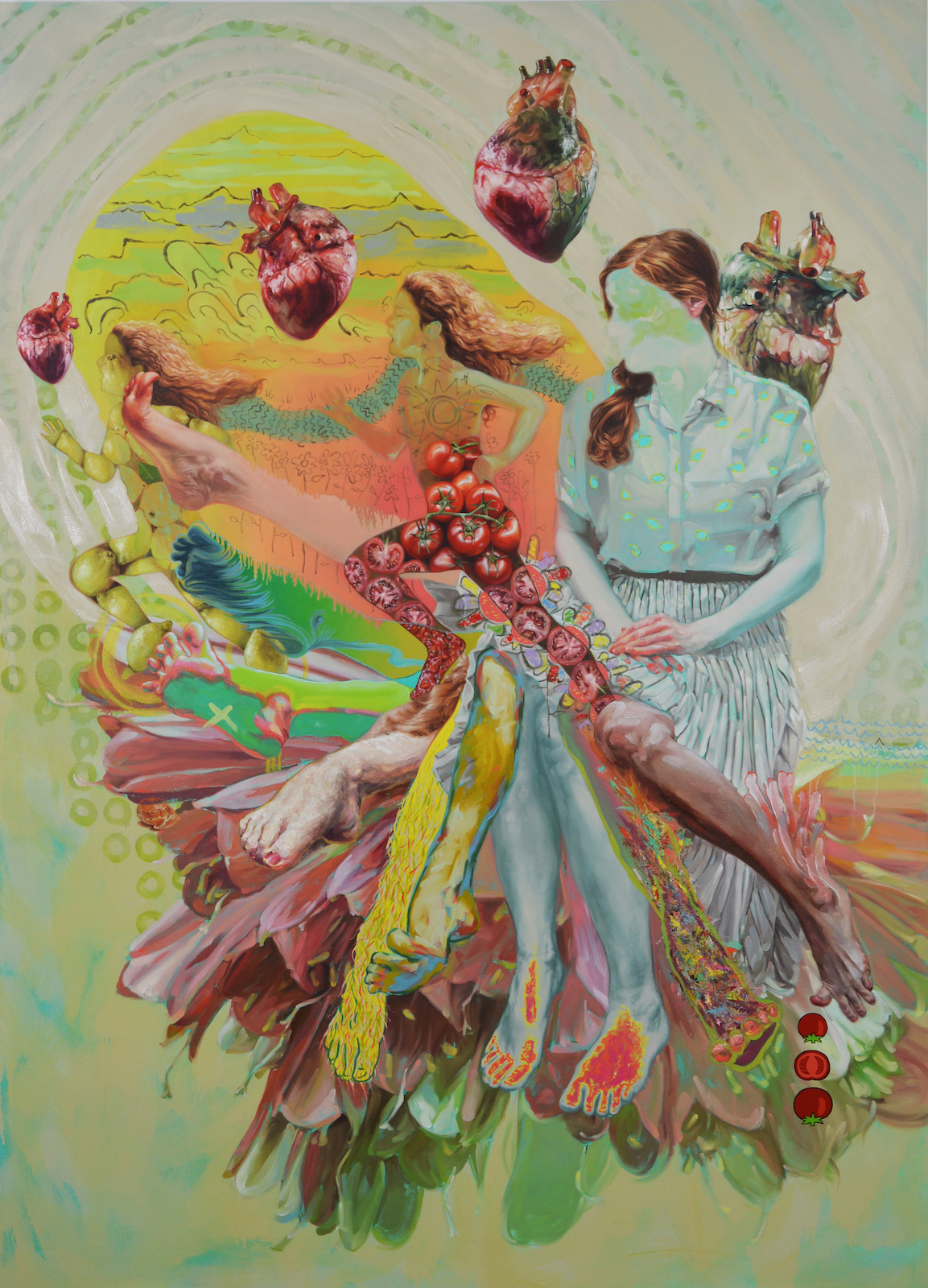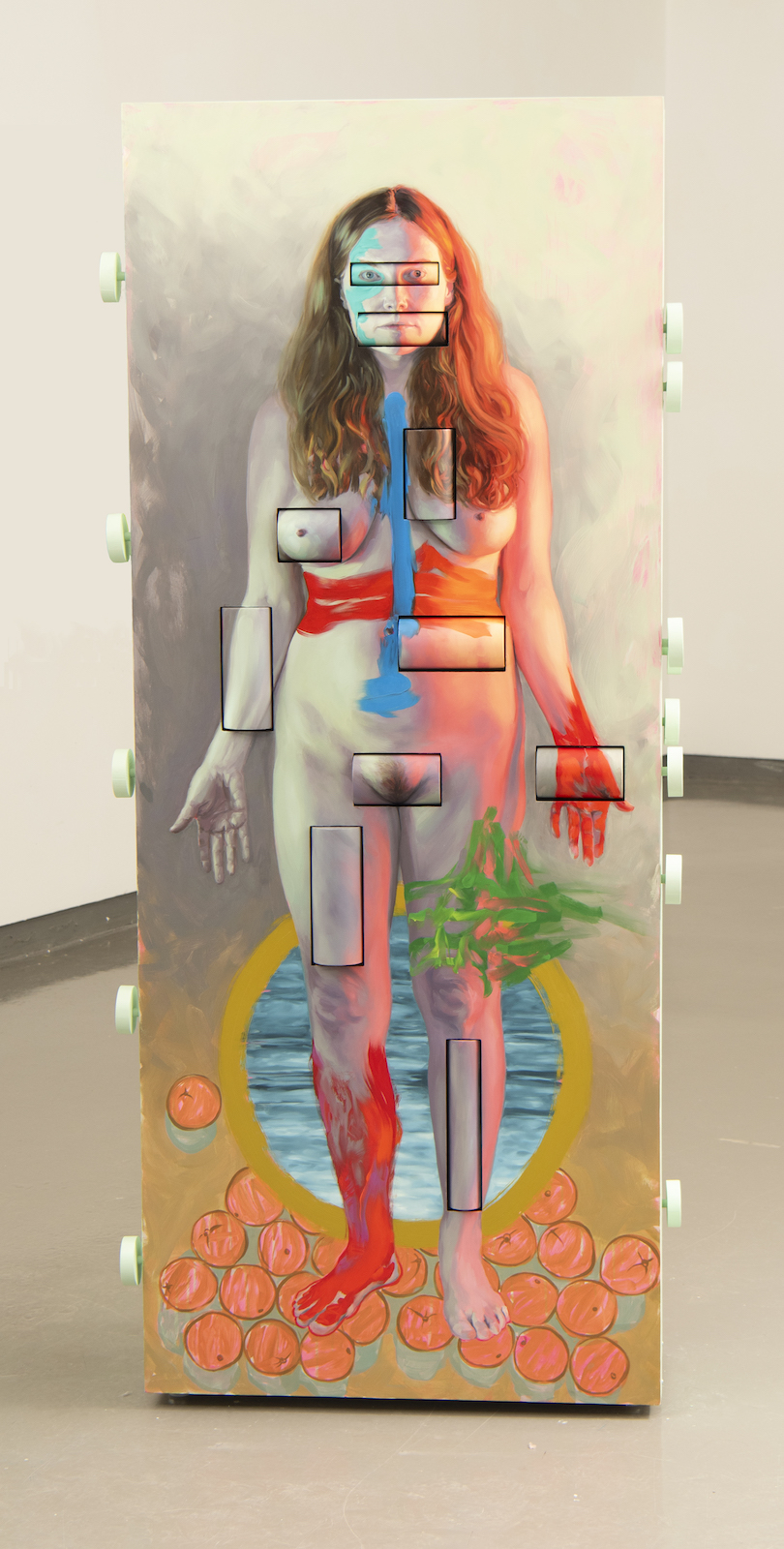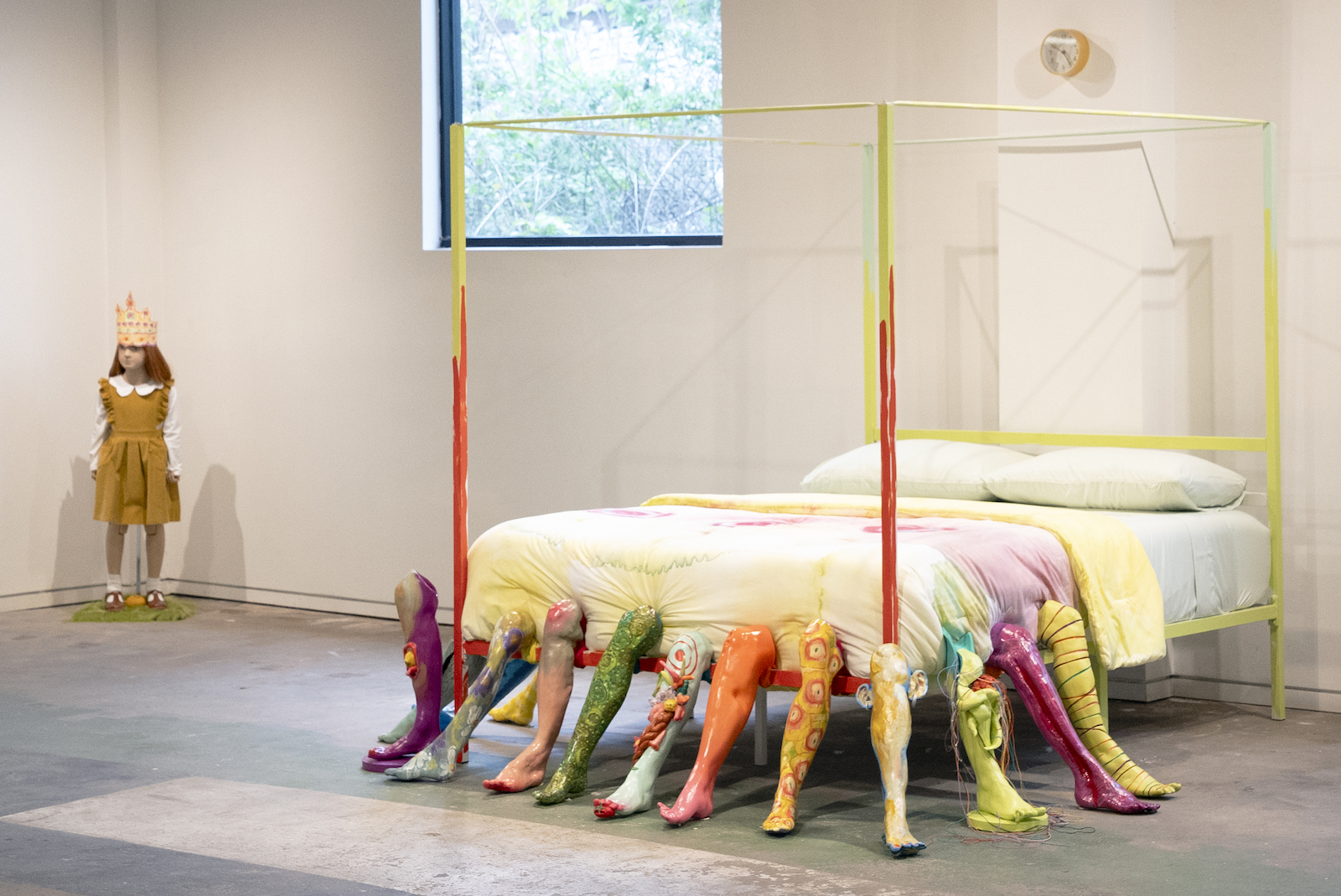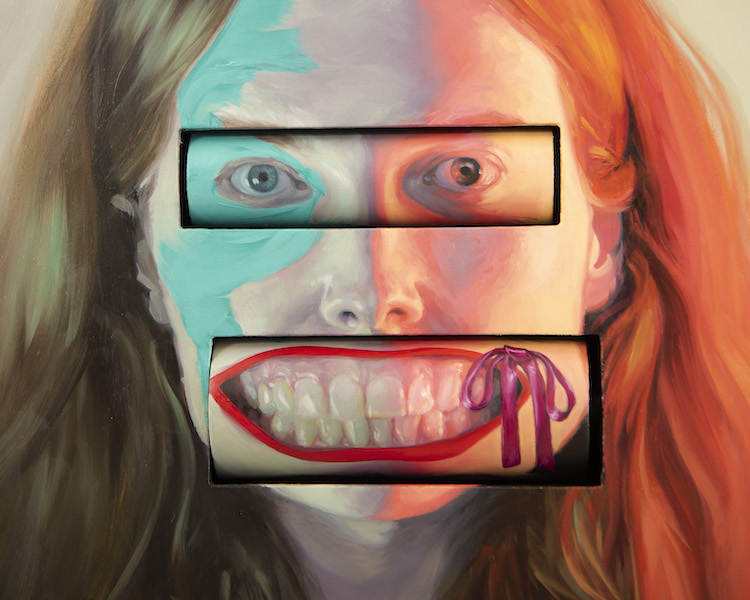Amanda Grae Platner: It’s Still Not Me, It’s You
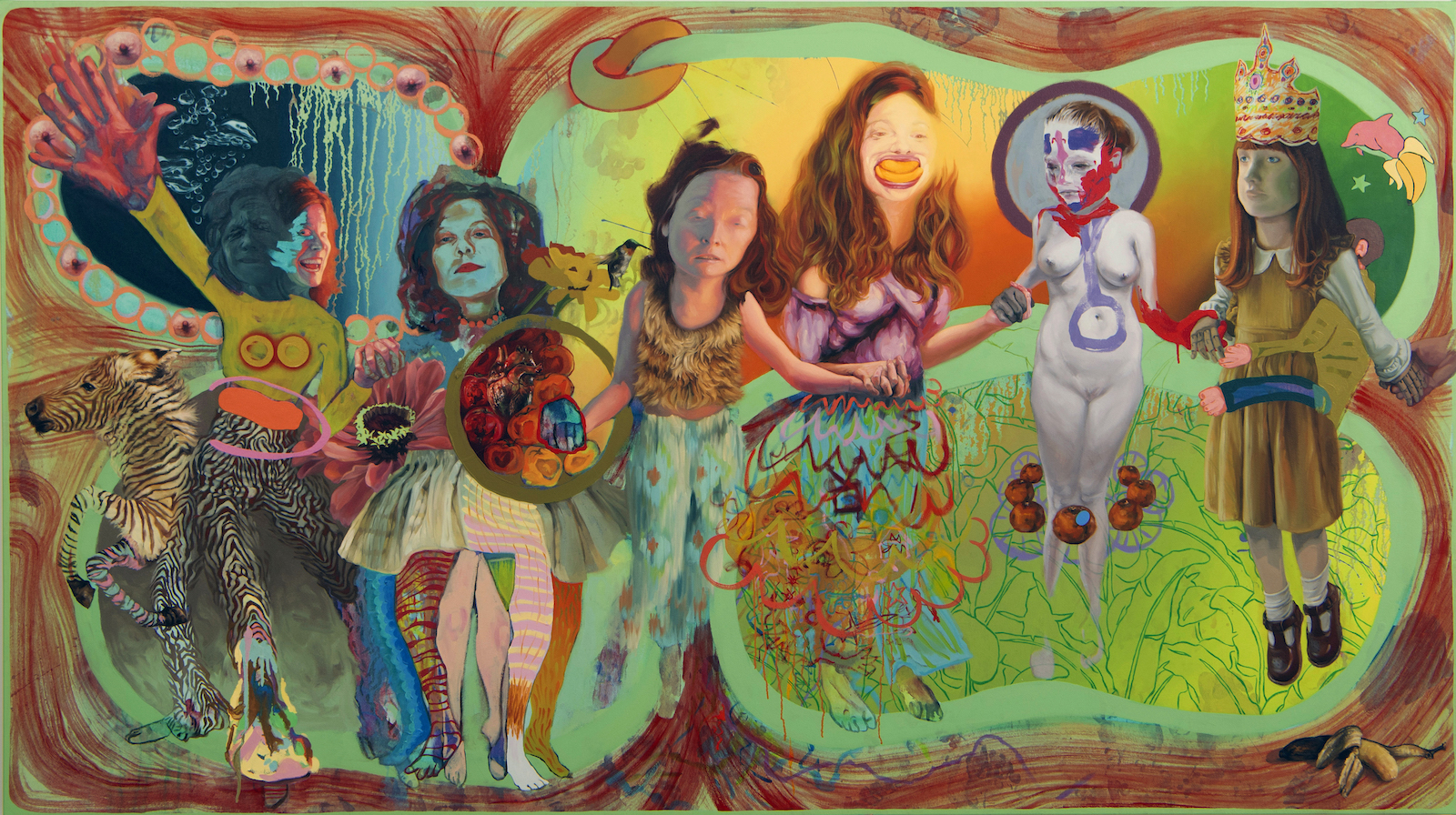
Amanda Grae Platner, Suck it Up Buttercup, 2024, oil and latex enamel on canvas, 48 x 84 inches [courtesy of the artist and Echo Contemporary Arts, Atlanta]
Share:
How can one induce empathy in others? In oneself? If only there were a medical-grade cocktail we could inject to allow, for a moment, an exchange of brains and bodies and feelings—an instant resolution to all conflict and misunderstanding, straight to the bloodstream. There are plenty of available resources for expanding and exercising one’s own empathetic reach, but not much on how to expand someone else’s. Have you ever begged someone to be kinder to you? Did it work? Explaining, screaming, crying, pleading, whispering—these rarely trigger empathy when a person is resistant. Nevertheless, Amanda Grae Platner gives it a go: boldly, bravely, vibrantly.
Amanda Grae Platner, The Usual Compromise, 2024, oil on panel, latex enamel, plaster, wooden stool, and brass picture hanger, dimensions variable [courtesy of the artist and Echo Contemporary Arts, Atlanta]
In It’s Still Not Me, It’s You at Atlanta’s Echo Contemporary Art, Platner’s self-portraits and installations invite the viewer into her world. She coaxes empathy through a variety of strategies, some that are playful and interactive, others that involve showing pain. In one video, Twelve Gifts (2022), the artist eats raw lemons—her eyes watering, juice dripping into her hair. Platner has multiple sclerosis, which she references heavily in her work, while posing underlying questions of accessibility. In her installation The Usual Compromise (2024), a painting appears displaced—evidenced by empty hanging hardware. Instead, a canvas hangs awkwardly above and to the right. A ceramic leg extends from the painting and rests atop a wooden stool. At the top left of the assemblage hangs a portrait of Platner, giving the middle finger. Her modeled wrist, increasingly abstracted, extends to the floor and becomes tonguelike. The installation, with its off-balance construction and implication of a plan gone awry, makes a point about the inherent inaccessibility of art in many galleries and institutions, and about the artistic compromises that are then forced to occur.
Platner’s work includes many references to childhood, or to the inner child. Colors in the exhibition are bright and cheery. Platner’s realist oil paintings also feature childlike scribbles and cartoons, such as flower doodles that might cover a young girl’s journal. In one corner a life-sized doll representing the young Platner watches over the proceedings. These childhood allusions serve several functions: First, they present part of Platner’s identity, in a nod to how past and present become melded together when considering the self. Second, perhaps as an appeal to understanding, and as a veiled reminder, the eyes of the child are watching.
In Suck It Up Buttercup (2024), Platner further explores identity through six self-portraits, each depicting a different side of the artist. One figure references the artist’s past performance artworks; another seems to dance exuberantly with dual facial expressions that are a complex mash up of grimace and open-mouthed smile. One figure seems to stumble, eyes barely open. Yet another—a doll-child Platner—floats, a paper-crown upon her head. The figures hold hands, supporting each other.
Amanda Grae Platner, Suck it Up Buttercup, 2024, oil and latex enamel on canvas, 48 x 84 inches [courtesy of the artist and Echo Contemporary Arts, Atlanta]
Fruit often appears in Platner’s work, particularly tomatoes and lemons. Interwoven into images of the body, fruit serves as a metaphor for aging, change, or pain. A line of lemons makes up Platner’s spine, the lowest of them molding. Tomatoes also appear within the lines of the body, or, as in She’s a Tomato (2023), in Platner’s mouth. Their shiny, juicy, plump redness often descends into more muted, rotting, and shriveled forms.
Platner uses another empathy-inducing technique: touch. Many of her works are interactive, with spinnable wooden cylinders embedded within. Visitors can rotate them to see parts of Platner’s body transform. A breast becomes a tomato, then a bloody heart penetrated by the beak of a hummingbird. Her facial expressions change from languid smile to scream, or to a strange mish-mash of both. A foot is inflamed, then becomes a peaceful countryside. A mouth becomes a pond. It’s clever, well-constructed, and fun. But while, in many ways, these interactive works are playful and humorous, they also demonstrate the ever-changing, unpredictable, and complicated ways in which disability can affect the body.
Amanda Grae Platner, Never Let an Orange Go Bad, 2022, oil on canvas, 84 x 60 inches [courtesy of the artist and Echo Contemporary Art, Atlanta]
Amanda Grae Platner, I Opened My Guts, Your Recycled Them with the Pickle Jar, 2024, oil on panel, 74 x 32.5 x 12.5 inches [courtesy of the artist and Echo Contemporary Arts, Atlanta
As part of It’s Still Not Me …, Platner staged two iterations of a performance titled Hold that involved audience participation. The directive was simple. Platner lay in a four-poster bed, which was surrounded by ceramic legs protruding from the mattress. All very colorful, some legs were adorned with flowers or fruit, others were cracked or spewing wires. One leg sported a mouth vomiting a lemon. Most legs displayed some manner of warping—the shin curving back on itself or the toes contorted against one another. As Platner lay on the bed-shrine, visitors were invited, one at a time, to lie down or sit with the artist for as long as they wished, under the condition that they hold Platner’s hand the entire time. Participants could speak to Platner, but she would remain silent. It was a performance about rest and empathy, but perhaps more so about loneliness, and the very human desire to be held—and, conversely, the human hesitancy to hold.
Amanda Grae Platner, Hold, metal framed bed, mattress, painted bedding, ceramics, oil paint, latex enamel and clock, 2024 [courtesy of the artist and Echo Contemporary Arts, Atlanta]
To be held. To be touched, to be understood. To ask for understanding and receive it. To show someone who you are, to be seen, to have someone want to see you. These needs and desires are shared, and, in It’s Still Not Me, It’s You, extremely personal. Platner’s work acts as an invitation and as a challenge: Can you handle it?
EC Flamming is a writer, editor, and curator based in Atlanta, GA. EC’s work focuses on the cultural impacts of moving images and contemporary art to explore how media consumption shapes and reflects social relations. She has written for Art Basel, ART PAPERS, ArtsATL, Screen Slate, Paste, BURNAWAY, Photograph, and Another Gaze.
Amanda Grae Platner, I Opened My Guts, Your Recycled Them with the Pickle Jar, detail, 2024, oil on panel [courtesy of the artist and Echo Contemporary Arts, Atlanta]
